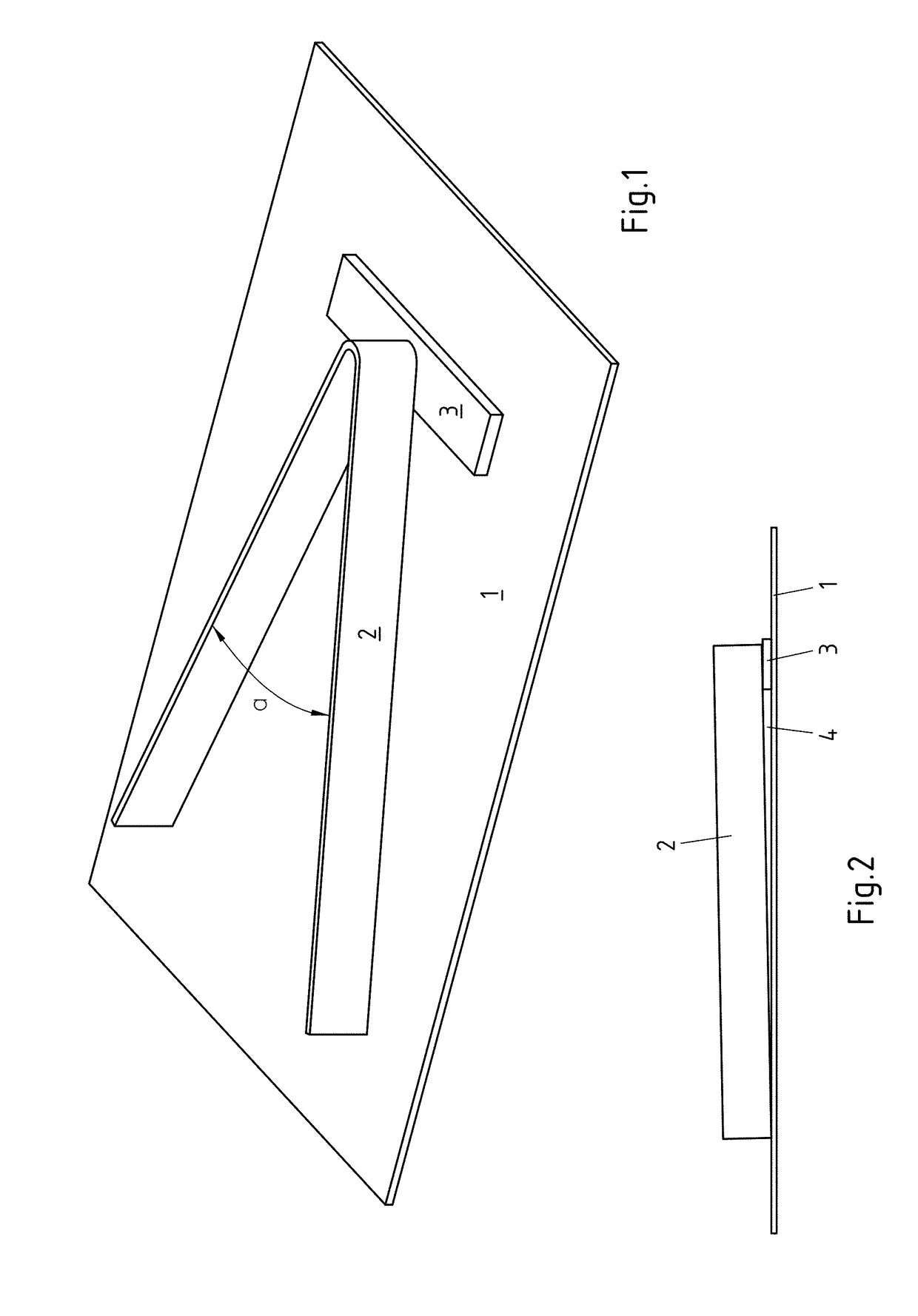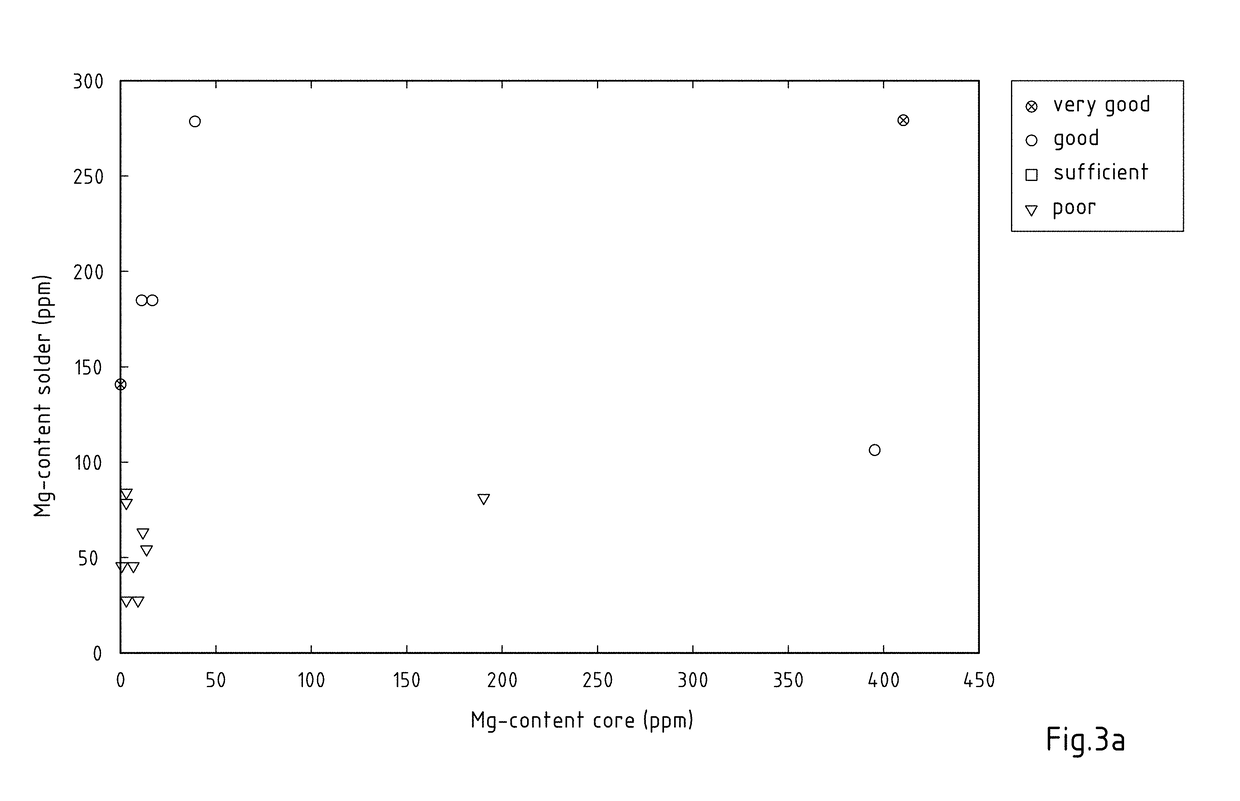Aluminium composite material for use in thermal flux-free joining methods and method for producing same
a technology of aluminum composite materials and thermal flux-free joining, which is applied in the direction of manufacturing tools, solvents, transportation and packaging, etc., can solve the problems of deteriorating quality of solder connection, high installation cost, and use of corrosive or non-corrosive flux agents, and achieve flux-free joining good results, cost-effective
- Summary
- Abstract
- Description
- Claims
- Application Information
AI Technical Summary
Benefits of technology
Problems solved by technology
Method used
Image
Examples
Embodiment Construction
[0162]In order to examine the advantages of the aluminium composite material according to the invention, a number of tests have been carried out with a specified solder test arrangement, as is perspectively represented in FIG. 1. The solder test arrangement essentially consists of three parts in total, a sheet metal 1, an angular sheet metal 2 and a contact sheet metal 3 for the angular sheet metal 2. With its closed end 2a, the angular sheet metal 2 rests on the contact sheet metal 3 arranged on sheet metal 1. Both leg ends 2b, in contrast, rest on the sheet metal 1 such that, as represented in the side view in FIG. 2, a variable gap results from the contact point of the leg ends 2b of the angular sheet metal 2 to the contact point of the closed end 2a on the contact sheet metal 3. The solder gap 4 is increasingly larger from the angular ends 2b to the closed end 2a of the angular sheet metal. The increasing solder gap 4 means it can be determined to what extent the solder properti...
PUM
| Property | Measurement | Unit |
|---|---|---|
| Fraction | aaaaa | aaaaa |
| Fraction | aaaaa | aaaaa |
| Fraction | aaaaa | aaaaa |
Abstract
Description
Claims
Application Information
 Login to View More
Login to View More - R&D
- Intellectual Property
- Life Sciences
- Materials
- Tech Scout
- Unparalleled Data Quality
- Higher Quality Content
- 60% Fewer Hallucinations
Browse by: Latest US Patents, China's latest patents, Technical Efficacy Thesaurus, Application Domain, Technology Topic, Popular Technical Reports.
© 2025 PatSnap. All rights reserved.Legal|Privacy policy|Modern Slavery Act Transparency Statement|Sitemap|About US| Contact US: help@patsnap.com



